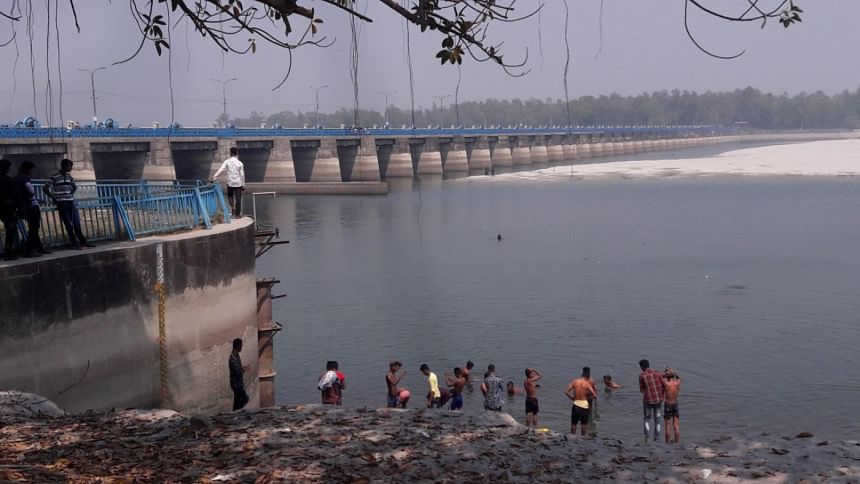
Discussing the Teesta water-sharing agreement has become part of the routine in prime-minister-level meetings between Bangladesh and India. In each meeting, the prime minister of Bangladesh would request the Indian prime minister for the conclusion of the interim agreement on sharing the water of Teesta, as agreed upon by both governments in January 2011. And then the Indian PM would reiterate that his government was working with all the stakeholders in India for an early conclusion of the agreement. This kind of request and assurance can be found in all the recent joint statements, like the joint statements issued during the Bangladesh PM’s visit to India in October 2019, and the Indian PM’s visit to Bangladesh in March 2021.
However, an exception can be seen in the statement of September 2022, during the Bangladesh PM’s visit to India, where she raised the issue of signing the draft Teesta agreement prepared in 2011. That time, there was no assurance from the Indian PM in the statement. Subsequently, neither of the prime ministers mentioned the Teesta water-sharing agreement in the joint statement titled “India-Bangladesh Shared Vision for Future,” issued after the latest visit of Prime Minister Sheikh Hasina to India on June 21-22 this year.
Instead, it was announced that an Indian technical team would soon visit Bangladesh to discuss “conservation and management of the Teesta River inside Bangladesh.” What India meant by “conservation and management” was elaborated on by Indian Foreign Secretary Vinay Mohan Kwatra.
“It is less about the water-sharing part, but more about management of water flow within the Teesta River,” explained Secretary Kwatra, in a special media briefing.
This omission of the Teesta water-sharing agreement from the joint statement is a significant change. Does this mean that the Teesta water-sharing agenda has been abandoned?
The discussion on the Teesta River Comprehensive Management and Restoration Project (TRCMRP) has been going on in Bangladesh for quite a few years. This megaproject to restore the Teesta is supposed to be implemented with financial and technical assistance from China. Since 2019, China and Bangladesh have been discussing this matter. Now it appears that India has also become seriously interested in the project.
This is because the region where the TRCMRP is to be implemented is deemed strategically important by India. According to a report in the Hindustan Times on June 22, besides worries about water flow data and other information on the cross-border river being scooped up by China, India has concerns about Chinese personnel establishing a presence at the project site located near the “chicken’s neck”—the narrow strip of land connecting the northeast of India to the rest of the country.
But will the Teesta crisis be solved by conserving and managing the water of the Teesta inside Bangladesh? The main problem of the Teesta River is India’s unilateral withdrawal of water from the river by building barrages upstream and the creation of obstacles in river flow by constructing infrastructure projects, including hydroelectric power plants. So, what will be the procedure of involving India, the country which is responsible for drying up the Teesta River and depriving Bangladesh of the fair share of the river’s water, in the management of the river inside Bangladesh? Accepting India’s technical assistance in an attempt to revitalise the Teesta in its current state, without entering a water-sharing agreement, could mean accepting unilateral withdrawal of water from the Teesta by India.
Another question is, no matter which country implements the TRCMRP project, is it really possible to solve the Teesta water crisis by implementing it inside Bangladesh, without removing all the obstacles to the water flow upstream in India? According to a demonstration by Power China, the project involves reducing the width and increasing the depth of the river by dredging and building embankment on both sides, recovering 170 square kilometres of land on both sides of the river by filling with dredging soil and constructing housing and industrial parks, among other things, on that land. At present, the maximum width of the Teesta River is 5.1 kilometres and the average width is 3.1 kilometres. Under the TRCMRP project, this width will be reduced to 0.7 kilometre to one kilometre, which will cause a serious adverse effect on the velocity and water carrying capacity of the river.
According to a study by Dr Md Khalequzzaman, professor of geology and environmental sciences at the Commonwealth University of Pennsylvania in the US, due to the reduced cross-section of the river, the velocity of the river will increase. As a result, when the flow of water increases greatly during the rainy season, the erosion tendency of the two banks will increase. Due to the embankments on both sides of the river, most of the tributaries and distributaries of the Teesta will likely be cut off from the main river. For this reason, during flooding, the flow in the river will not spread to its tributaries and distributaries, causing the floods to intensify. Even the reclaimed land will be in the active flood-flow zone of the Teesta and will likely be exposed to flood damage.
But after all these, the proposed TRCMRP will not be able to solve the water scarcity issue because without increased water flow from upstream, no additional water can be generated by dredging the river to greater depths. The water that might become available in the river after deepening the riverbed would be shallow groundwater. Using this water for irrigation will lower the groundwater table in the catchment area, reducing the availability of potable water and irrigation water drawn through shallow tube wells.
So, no matter what activities are done under the Teesta megaproject, if Bangladesh cannot get an equitable share of the water from upstream, the Teesta crisis will not be resolved. Even if the Teesta water-sharing agreement is signed between Bangladesh and India over sharing water only at Gajoldoba point, without taking into account the impact of upstream projects in Sikkim, the crisis will not be solved.
Any discussion on the Teesta management should involve a water-sharing agreement with India which will ensure equitable water flow, enforce restrictions on unilateral changes in upstream river flow, keep provisions for mandatory exchange of data regarding any upstream project, and have the option for third-party dispute settlement. Otherwise, Bangladesh will continue to suffer for the Teesta for decades to come.
Daily Star









